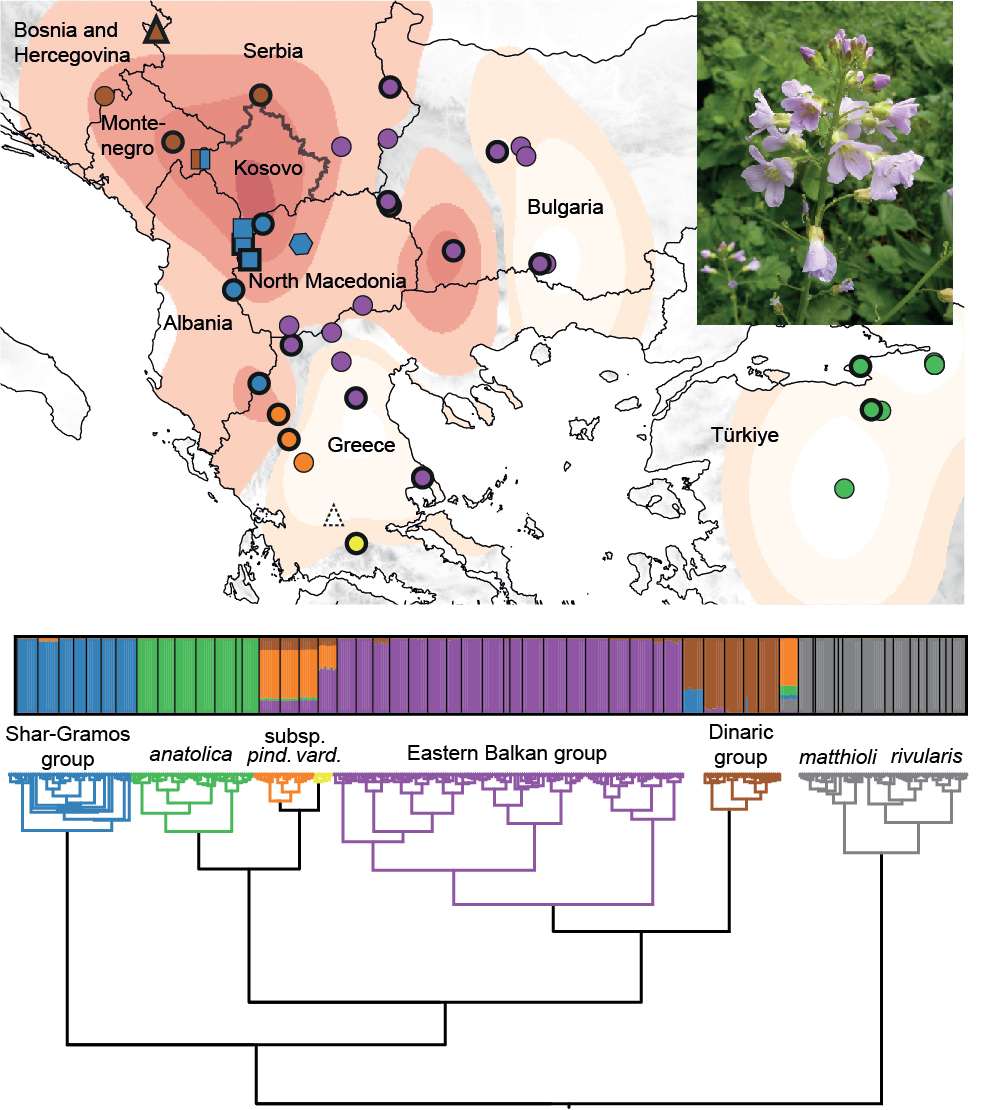
It is a well-known fact that biodiversity on Earth is not sufficiently explored and described. Despite the long tradition of botanical research in Europe, this fact surprisingly applies also to the European flora. One of the significant centers of species and genetic diversity in Europe is the Balkan Peninsula, which is caused by its high topographical heterogeneity, diversity of habitats, as well as favorable conditions during the Pleistocene climatic changes that allowed species to survive and accumulate diversity in this territory.
In our study, we used an integrative approach, including genome sequencing and ecological niche modeling, to reveal previously unknown (cryptic) diversity in the studied plant species Cardamine acris. This species inhabits humid and cold mountain habitats and, despite its seemingly compact range, embodies significant genetic divergence. We disclosed multiple mutually interacting evolutionary processes that were accompanied by historical shifts in distribution, thereby explaining the current genetic structure and diversity of this species.
Our study presents a deeper insight into the mechanisms that have shaped biodiversity and led to the emergence of new species. At the same time, it brings new information about processes of past geological periods, the traces of which we can observe today. Thus, this research contributes to a better understanding of the evolution of biodiversity at both regional and global levels.
 |  |
Reference to the study:
Šlenker M, Kantor A, Senko D, Mártonfiová L, Šrámková G, Cetlová V, Dönmez AA, Yüzbaşıoğlu S, Zozomová-Lihová, J. 2024. Genome-wide data uncover cryptic diversity with multiple reticulation events in the Balkan-Anatolian Cardamine (Brassicaceae) species complex. Molecular Ecology 33:e17564. https://doi.org/10.1111/mec.17564
This research was supported by the EU NextGenerationEU through the Recovery and Resilience Plan for Slovakia under the project No. 09I03-03-V04-00494.
Text: Judita Zozomová, Marek Šlenker, Adam Kantor



